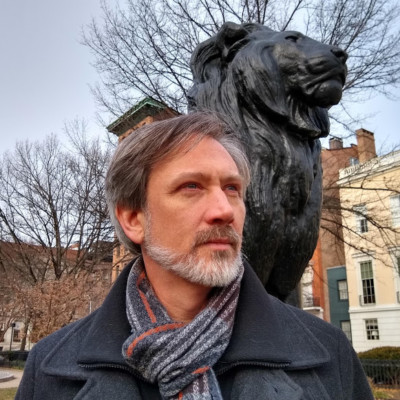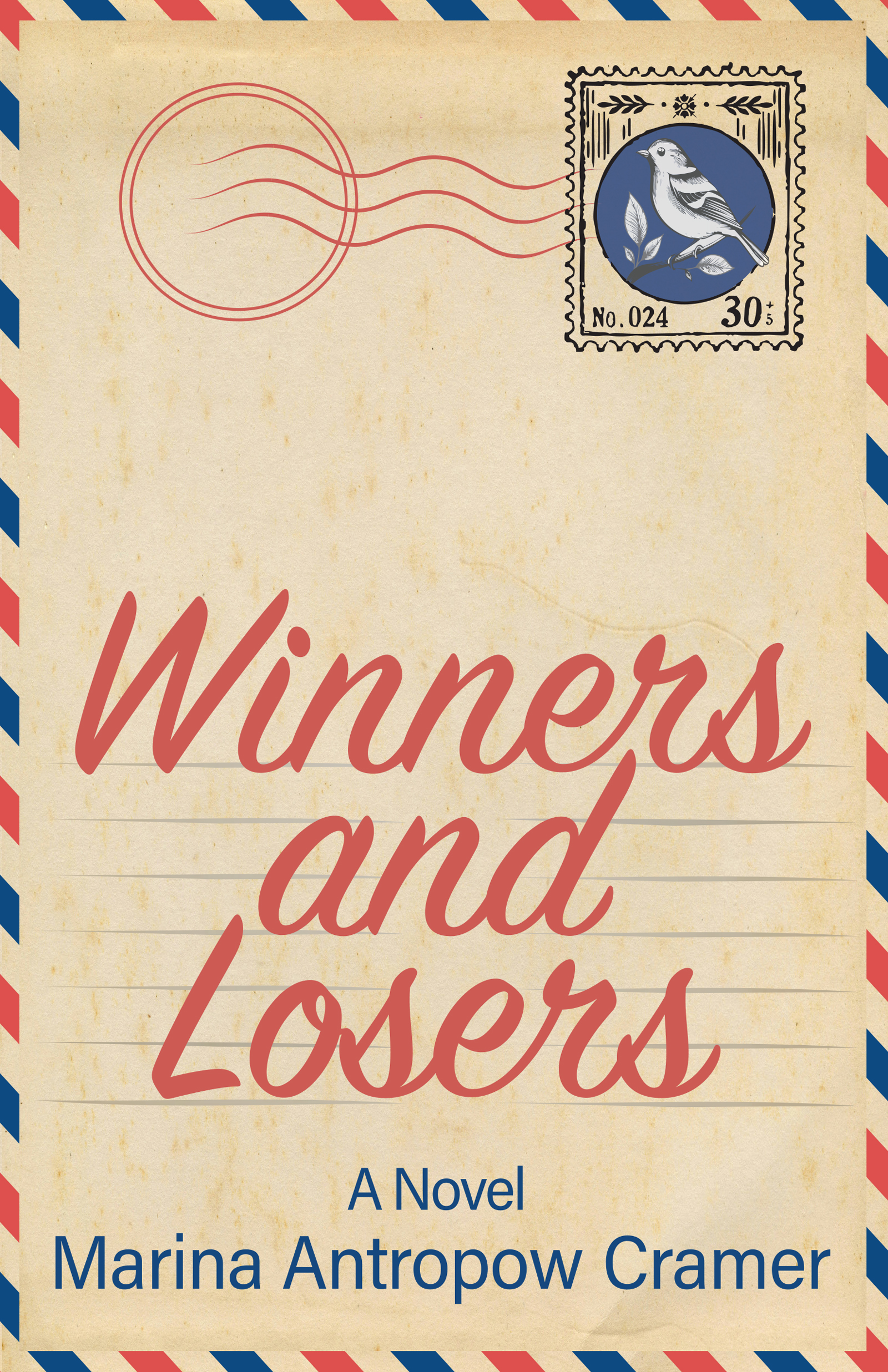Q: It says on your website that The Color of Jadeite is your first “action-adventure thriller”, what made you decide to change genres?
A: I’ve always been interested in adventures and thrillers. It turns out most of the work I’ve published in my career has been literary fiction, focused on people and their relationships and everyday life. But even as a child and teen, I was writing adventure stories. So it was inevitable that I eventually write an adventure thriller.
As I continue writing, I plan to alternate between literary and genre writing. Hopefully I’ll manage to bring a little “literary” to genre and some “genre” to literary fiction.
Q: Why China as the setting of the book? I saw that you traveled to China, was there something specific there that inspired you?
A: I love to travel, and I make a habit of visiting multiple countries each year—sometimes with the purpose of writing a travel story or scouting out potential settings for novels and stories. Sometimes just for the unique experience.
All of the locations featured in The Color of Jadeite are real paces that I visited during my recent trip to China. I found the places to be exotic and knew that I would want to use them as settings for a novel or series of stories. From the twisting side streets of Shanghai to the Imperial architecture of Beijing, even when I was there I could see that these would be interesting places to set scenes. Knowing that I also wanted to write an adventure thriller, I realized that these colorful and exotic locales would be the perfect settings for a thriller.
Q: You have a fair amount of characters in The Color of Jadeite from the elegant Wei Wei to Comedic Ex- Drug Addict Salvador, but chose to tell the story from Clive’s point of view, why did you chose to do this?
A: It felt like a natural choice, to tell the story from the private detective’s point of view. Although this book is more modern-day adventure than noir novel, I wanted to give it a gumshoe-detective feel with the first-person narration of a private eye. I also see Clive Allan as a potential series character who could come back for sequels and prequels. There are a lot of places to visit in the world.
Q: What inspired the characters?
A: I wanted to make Clive and those around him real people, not just cookie-cutter archetypes. That inspired me to create several companions for Clive. I wanted his relationship with each person to be unique, which helped to solidify each of them as real individuals. So, for example, there is the mutual infatuation and romance between Clive and Wei Wei. A mutual respect and almost brother-sister/father-daughter relationship between Clive and Mackenzie. He’s sort of a mentor and superior to Salvador. And Mark is a former colleague, current friend, and annoyance to him. So inspiration for each of these characters came from what type of relationship they could have with Clive as they embarked on the hunt for the jadeite tablet.
Q: Who is the character you had the most fun developing and what is your favorite character?
A: That’s hard to say, since I loved all of the characters. Clive is the center of the action, so he’s arguably the most important character. I had a lot of fun developing Wei Wei and providing twists and turns to surprise Clive and readers. In some ways, Yuming, Clive’s former love interest, plays a central part even though she’s technically never present in the book.
Salvador may have been the character who unexpectedly grew on me the most. He was coming from a low place, arguably the least “together” of the characters in the book. But because of where he came from, he always tried hard to prove himself and do the right thing. Despite his failed attempts to be the perfect wing man—or maybe because of them—he was an endearing character.
Q: The main plot point of this story is the search for the jadeite tablet, is there any such artifact in real life
A: This treasure is fictional, but the premise that such an artifact could exist is based in reality. Emperor Xuande, the original owner of the tablet, was real, and he was an artist and poet as well as an emperor. The history of the emperor and his interests is based in reality. For example, a lesser artifact is featured in the book, a hairpin belonging to Emperor Xuande. That was real, and there are public auction results to prove it. So I took it a step further and imagined that this creative Emperor who was a poet and who collected nice things could likely etch a jadeite tablet with his own poetry and illustration.
Q: Do the settings in the book really exist? How accurate is the historical context given in the book is accurate?
A: The settings depicted in the book are real. The streets, buildings, parks, and historical sites are all real places that I visited when there. I like to set scenes in real places, to base them in reality. I think it’s cool to be able to point to a real place as a setting to a scene.
The historical context given in the book is accurate, although some details involving modern-day items is fictionalized. For example, when the characters discuss the history of Emperor Xuande, or of the first Emperor of China, or when they talk about dynasties or the terracotta warriors or the Forbidden City, all of that is based in true history. Other details, such as the action of the novel in current times, the collector who recently hid the tablet and left breadcrumbs for a worthy collector to find it, and the jadeite tablet itself are all fictionalized. So although it is a fictional novel, the historical context is real.
Q: Clive mentions early in the book that Mackenzie, Salvador, and Mark knew each other from before, does that mean we will see any prequels and sequels?
A: That will depend on how well this first book is received. This novel is entirely stand-alone. However, I do hope to toss Clive Allan into some new adventures. And I do have in mind that there is as much or more potential for prequels as sequels. I like the idea of going back into Clive’s youth. Any or all of the characters could end up in prequels. Some could play a role in sequels as well.
I’ve also thought about writing about Emperor Xuande and his collections. The more I learned about him, the more I became interested in his eccentricities. So he could be a subject I revisit one day.
Q: What was the writing process like for the Color of Jadeite in comparison to your other published works. Was it easier to write or harder to write than others?
A: My writing habits for writing this were much the same as with past novels. I tend to write in long spurts, and when I’m writing I submerge myself in the process and subject matter. So when I began working on The Color of Jadeite, I read a lot about Chinese culture and Emperor Xuande and the Forbidden City and such. I also read thrillers and old gumshoe detective novels. And I watched a good number of documentaries.
Of course, that’s when I wasn’t actively writing, which I would do for several hours a day—sometimes as much as 14 hours a day.
After writing a first draft, I put it aside for a few months before revisiting it: reviewing and rewriting the novel.
The one difference for this novel is that I needed to spend more time plotting it out. With literary fiction, I usually know where I’m headed and some pivotal scenes from point A to B, but I don’t tend to outline beyond having several pages of notes and scenes.
For The Color of Jadeite, it was important to outline it in detail, not only because of the action that needed to take place and the places I needed them to visit, but also because of the larger cast of intertwining characters—some of whom don’t make it to the end of the novel.
Before I began writing Jadeite, I already had both a full outline and a “beat sheet” that attempted to describe every scene I knew needed to be included.
I’ve done this before, but for most of my recent writing I have not used outlines or beat sheets. So this made it a very different process in that way.
Q: And Finally, if you change any aspect of your writing process in The Color of Jadeite, what would it be?
A: I’m not sure that I would change any aspect of how I went about writing the novel. At least, nothing reasonably within my control. If I could have, I would have returned for another visit to China as I was writing the final draft. If I had more time to devote to fiction instead of also needing to write content to pay the bills, I could have completed the writing process faster and set it in “the present” instead of rooting it in 2016. Back when Walmart was Wal-Mart and the Shanghai Tower was still under construction. But those are circumstances beyond a fiction writer’s control. At least in real life.
Q: Any Advice for aspiring writers out there?
A: It may seem cliché, but read, read, read. The more fiction you read, the more you’ll be exposed to different ideas and styles and ways of viewing the world and the story.
Then, write, write, write. Sometimes aspiring writers get hung up about starting because the feel that their first chapter has to be perfect or that they’re just not ready to write the novel yet. Don’t let that stop you. You can always go back and rewrite your first draft—and you should. But if you don’t start, you’ll never have that first draft to motivate you to write a second draft.
Which brings us to the third step: rewrite, rewrite, rewrite. Only in rewrites can you fine-tune and polish what you create in your first draft.
So, first read as much as you can, then write and rewrite. Get feedback from other writers you know and take what they say to heart.
There will be days when you want to give up and build a fire out of your rejection letters. But let that fire light the way to more reading, which will motivate you to write again. Perseverance is as important as persistence and perspiration.

